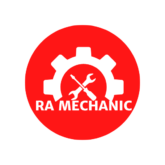
Manufacturing and industrial facilities across North America face an unprecedented challenge: finding and hiring qualified millwrights. With the Bureau of Labor Statistics projecting 13% growth in millwright employment through 2034 and nearly 54,200 annual job openings, the competition for skilled millwrights has never been more intense. Plant managers and small business owners must develop strategic hiring approaches to secure the talent essential for maintaining their critical machinery and equipment.
The manufacturing sector confronts a severe workforce shortage that particularly impacts specialized trades like millwrighting. Recent data indicates that 2.1 million manufacturing jobs could remain unfilled by 2030. This shortage directly affects production capacity, equipment reliability, and ultimately, business profitability. For millwrights specifically, the aging workforce compounds the problem, as experienced professionals retire and take decades of institutional knowledge with them.
“The challenge isn’t just finding warm bodies to fill positions,” said David Case, President of Advastar, a millwright staffing agency. “Companies need millwrights who can handle increasingly sophisticated machinery, understand predictive maintenance technologies, and adapt to automation systems. The skill requirements have evolved dramatically over the past decade.”
Understanding Modern Millwright Qualifications
Today’s millwrights require a comprehensive skill set that extends far beyond traditional mechanical aptitude. Successful candidates typically complete a four-year apprenticeship program combining 8,000 hours of on-the-job training with 720-800 hours of classroom instruction. These programs cover blueprint reading, hydraulics, pneumatics, welding, electrical systems, and increasingly, computerized equipment diagnostics.
The Red Seal certification has become a standard credential for millwrights in Canada, while in the United States, many employers seek candidates who have completed United Brotherhood of Carpenters (UBC) approved apprenticeships or possess National Millwright Apprenticeship Program (NMAP) qualification. These certifications demonstrate standardized competencies in mathematics, machinery installation, systems components, and precision alignment techniques.
Beyond formal certifications, employers should evaluate candidates for critical soft skills. Problem-solving abilities prove essential, as millwrights often troubleshoot complex machinery failures under pressure. Communication skills matter equally, as millwrights must collaborate with production teams, interpret technical documentation, and sometimes train junior staff members.
Crafting Competitive Compensation Packages
Compensation remains a crucial factor in attracting qualified millwrights. According to recent industry data, millwright wages average $30.15 hourly nationally, with experienced professionals earning significantly more. Regional variations exist, with states like Nevada, Delaware, and California offering premium wages that can exceed $59,000 annually for union millwrights.
“Companies that treat compensation as their only recruiting tool are missing the bigger picture,” Case explained. “Today’s millwrights want comprehensive benefits, including health insurance, retirement plans, and continuing education opportunities. They’re also looking for overtime opportunities, which can add $7,000 or more to annual earnings.”
Small businesses competing against larger corporations must think creatively about compensation structures. Consider offering performance bonuses tied to equipment uptime, skill development incentives, or flexible scheduling arrangements. Some successful employers provide tool allowances, company vehicles for service calls, or profit-sharing programs that align millwright interests with organizational success.
Developing Effective Recruitment Strategies
Traditional recruitment methods often fail to reach qualified millwrights. Instead of relying solely on online job boards, successful employers develop multi-channel recruitment strategies. Partner with local technical colleges and apprenticeship programs to identify emerging talent. Many institutions offer pre-employment millwright programs that prepare students for apprenticeships, creating a pipeline of qualified candidates.
Industry networking proves invaluable for millwright recruitment. Attend trade shows, join manufacturing associations, and participate in local industrial roundtables. Current millwrights often know qualified professionals seeking new opportunities. Employee referral programs with meaningful incentives can leverage these professional networks effectively.
“The best millwright recruiting happens before you need to hire,” Case noted. “Build relationships with training programs, maintain visibility in the trade community, and create a reputation as an employer of choice. When positions open, you’ll have candidates ready to consider your opportunity.”
Consider partnering with specialized staffing agencies that understand millwright requirements and maintain databases of pre-screened candidates. These agencies can provide temporary-to-permanent placements, allowing employers to evaluate candidates’ skills and cultural fit before making long-term commitments.
Streamlining the Interview and Assessment Process
Interviewing millwright candidates requires a balanced approach combining technical assessment with behavioral evaluation. Develop practical tests that simulate real workplace challenges. Present candidates with equipment diagrams, alignment problems, or troubleshooting scenarios relevant to your operations. Observe their problem-solving approach, attention to safety protocols, and ability to explain their reasoning.
Include facility tours in the interview process, allowing candidates to see actual equipment they would maintain. This transparency helps candidates make informed decisions while demonstrating your commitment to open communication. Have current millwrights participate in interviews to assess technical competence and team compatibility.
Background verification proves critical for millwright positions. Verify apprenticeship completion, check certification validity, and confirm previous employment. Safety record reviews are essential, as millwrights work with dangerous equipment and must demonstrate consistent adherence to safety protocols. Drug testing requirements should align with industry standards and insurance requirements.
Implementing Retention Strategies
Hiring millwrights represents only half the challenge; retention requires ongoing investment. Professional development opportunities rank highly among millwright priorities. Support attendance at training seminars, fund certification renewals, and provide cross-training in emerging technologies. As facilities adopt IoT sensors, predictive maintenance software, and automated systems, millwrights need continuous learning opportunities to remain effective.
“Retention starts on day one,” Case emphasized. “Comprehensive onboarding programs that familiarize new millwrights with facility-specific equipment, procedures, and culture significantly improve long-term retention. Assign mentors, provide clear advancement paths, and regularly recognize excellent performance.”
Create a positive safety culture that empowers millwrights to identify hazards and suggest improvements without fear of reprisal. Provide quality tools and equipment, demonstrating respect for their craft. Regular feedback sessions, competitive wage reviews, and responsive management practices contribute to millwright satisfaction and loyalty.
Adapting to Industry Evolution
The millwright profession continues evolving alongside manufacturing technology. Successful employers anticipate future skill requirements and adapt hiring practices accordingly. Seek candidates with experience in predictive maintenance technologies, automation systems, and data analytics. While traditional mechanical skills remain essential, millwrights increasingly need digital literacy to interface with computerized equipment.
Consider developing apprenticeship programs tailored to your specific equipment and processes. Partner with local educational institutions to create customized training curricula. Some forward-thinking employers establish millwright apprenticeships for military veterans, leveraging their technical training and disciplined work approach.

Geographic flexibility may expand your candidate pool. Remote monitoring technologies and centralized maintenance planning allow some millwrights to service multiple facilities. Consider whether your operations could accommodate traveling millwrights or shared services arrangements with neighboring facilities.
Looking Ahead
The demand for skilled millwrights will continue growing as manufacturing rebounds and infrastructure modernization accelerates. Plant managers and small business owners who develop comprehensive hiring strategies, offer competitive compensation packages, and invest in retention will successfully navigate the talent shortage. Remember that hiring millwrights represents a long-term investment in operational reliability and efficiency.
“Companies that view millwright hiring as a strategic priority rather than a reactive necessity will thrive,” Case concluded. “The investment in finding, developing, and retaining skilled millwrights pays dividends through improved equipment reliability, reduced downtime, and enhanced operational flexibility.”
Success in hiring millwrights requires patience, planning, and commitment to creating an environment where skilled professionals can build rewarding careers. By understanding qualification requirements, developing competitive compensation packages, implementing effective recruitment strategies, and focusing on retention, employers can build the skilled maintenance teams essential for manufacturing success in an increasingly competitive global marketplace.




